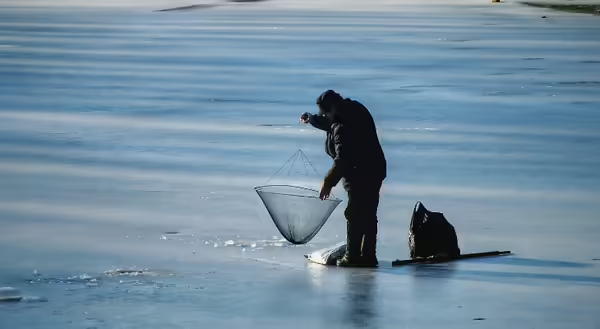
Jake’s family farm had two ponds full of bluegill, and he had always wanted to learn how to catch them through the ice. His friend, Carmen, had been taught how to ice fish by her uncle from Wisconsin a couple years before, so they decided on a Saturday afternoon adventure to try their luck.
Walking up to the first pond, Carmen stopped Jake for a moment.
"I’m not liking the look of this ice Jake," Carmen says. "We had a 4-H ice skating party last winter where our 4-H leader taught us about ice safety before we got to skate. I remember that clear ice is much stronger than cloudy or slushy, ice. We need at least 4 inches of clear ice to be safe.”
Winter weather in Illinois varies greatly north to south and year to year, so it’s no surprise that many people are unfamiliar with how and when the ice on a body of water is safe to access. The youth mentioned in this scenario were lucky to have had someone teach them the basics. Stay safe and watch our new winter ice safety video as a family.
"It’s clear there hasn't been much being done to address the topic of ice safety,” says Amy Rademaker, program coordinator for the Carle Center for Rural Health and Farm Safety.
The Illinois Fire Service Institute conducts training for first responders who make water and ice rescue services. The Illinois Department of Natural Resources has ice fishing safety materials, too. Both organizations list these safety basics:
- New ice is usually stronger than old ice.
- Clear ice is stronger than cloudy, or “snow ice” which is only half as strong as new, clear ice.
- A minimum of 4 inches of clear, newly formed ice may support one person on foot.
- Ice seldom freezes uniformly. Water movement or snow cover are two of many factors that cause differences in ice thickness and strength. A pond can have 12 inches of ice in one area and only 1 inch of ice only 10 feet away.
Trust me. Ice safety tips for recreational access to these areas are simple, and can be lifesaving. Be sure to:
- Test the thickness of the ice in several areas.
- Wear a personal floatation device under your winter gear.
- Go with a partner and stay a safe distance apart.
- Carry a rope and a personal pair of ice picks with you until you are certain the ice is safe.
For additional safety tips and information, visit the Department of Natural Resources ice fishing website, partially sponsored by the Illinois Natural History Survey.